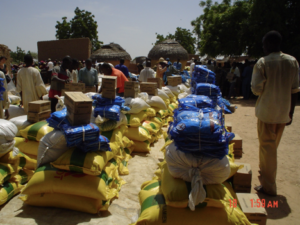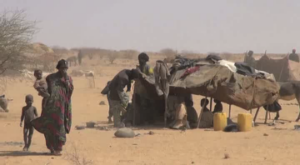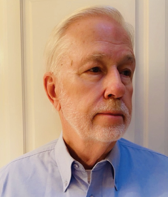“Coming to Grips with Poverty in Africa”
American Diplomacy May 1, 2023
by Mark G. Wentling (Honduras 1967-69 & Togo 1970-73)
•
Reducing poverty has been at the heart of U.S. foreign assistance in dozens of low-income countries for more than a half-century. Despite U.S. foreign policy objectives, much work, and hundreds of billions of assistance dollars expended, the poorest of the poor have not advanced. While some low-income countries have made some small progress, after decades of aid most are still in the bottom ranks of absolute poverty. All the countries in the Least Developed Country (LDC) category have more poor people than ever before.
Thirty-seven of forty-seven of these LDC countries are in Africa. Although a handful of countries have graduated from LDC status, this disturbing ranking remains basically unchanged since the LDC list was established by the UN General Assembly in 1971. This unchanging list of extremely poor countries tells us that a better understanding of poverty is needed, especially in Africa, to make U.S assistance programs more effective.
While Asian countries have made remarkable progress over the past 50 years in reducing the number of poor, the absolute number in sub-Saharan Africa (SSA) continues to grow. People in SSA are more than twice as likely to live in poverty than in South Asia, the next poorest region in the world. The World Bank reported there were 284 million Africans living in extreme poverty in 1990; this number had risen to 433 million in 2018 and continues to rise. The percentage of the population living in poverty in SSA is slowly decreasing, but this decline is overcome by population growth.
The COVID-19 pandemic pushed tens of millions of people below the poverty line of $1.90 per day. Climate change, rising crime, inflation, and violent conflict are forcing many more millions below this line. Governments that are unable to provide basic services and struggle to cope with high levels of national debt compound the problem. The 2030 UN targets for eradicating poverty will not be met.

Aid Distribution (photo by Mark Wentling)
Poverty is a Relative Concept
My work in the developing world has taught me that what people experience as poverty differs. When I was a Peace Corps Volunteer living in a village in Togo fifty years ago, a poor adult was someone who did not possess a chicken. Further queries revealed that a truly poor household was one that had to borrow embers from neighbors to start a cooking fire.
Years later, the President of Niger, Mamadou Tandja, told me that deep poverty for him was having no food and swallowing your pride by telling neighbors that your granary was empty. He said that when he was a child in eastern Niger, pride prohibited his family from telling their neighbors they had no food. They lit a fire so the neighbors would see the smoke and think they were cooking. He noted that “false pride” was a development obstacle. Despite this assertion, he demolished all roadside signs and posters suggesting there were food problems in his country, while also stopping the delivery of food aid. He objected as well to Niger being classified at the bottom of the UNDP’s Human Development Index and the UNICEF-led child nutrition survey showing the persistence of a nutritional crisis for a high percentage of Niger’s children.

A village chief told me in Niger that any household with a full granary was happy and there was little more they really needed, even though development indicators for education and health were abysmally low. Sometimes I thought different indicators should be used to measure poverty in Niger, one of the world’s poorest countries.
Types of Poverty
My mother was living poor in the United States, but when I visited her with some African friends, they said, “We can see she is poor, but if any African possessed what she did, they would be considered rich.” I got what they meant about possessing consumer goods. Similarly, my friends from West Africa said the people of Soweto were wealthy compared to the average person in their countries.
In nearby Zambia, subsistence rural farmers told me that poverty was all about having enough food and money. They were happy and life was good when there was more food and money. I thought “more food and money” should be an overarching slogan for our assistance programs.
Cattle herders in Africa’s Sahelian pastoral zones, on the other hand, might possess herds worth a fortune, but they had no money and refused to sell any of their cattle. Living outside of the monetized commercial world was fine with them.
Rapidly expanding poverty in fast-growing urban areas in Africa is eclipsing rural poverty. Having a job that pays a livable wage is usually the test of poverty, especially for educated urban youth. Job creation that provides opportunities to prosper may be a better litmus test of development in these areas.
Since the total dollar amount of remittances to Africa surpasses the total amount provided annually by external donor agencies, the role these remittances play needs to be considered as part of an overall plan to alleviate poverty.
Since 2015, the UN has defined the International Poverty Line as living on less than $1.90 per day. The World Bank declared in 2022 that anyone living on less than $2.15 per day was living in extreme poverty. It is assumed that people living below this line cannot afford to buy essential items, including a nutritious diet.
I spent my high school years on a hard-scrabble farm in Kansas. When I admired the large farm next to us and noted how nice it must be for our neighbors, I was told: “The main difference between us and them is the number of zeros behind our debts at the bank.” While this is a reminder that in a country such as the U.S. you can be wealthy one day and poor the next, in truly poor countries, poverty is not so transient. It is chronic and life-threatening.
Choosing the type of poverty being measured and clearly stating how a proposed activity will reduce this type of poverty on a sustainable basis needs to figure prominently in our official country development assistance strategies. Each country where we have a U.S. development assistance program should have available an in-depth study of poverty in the host country, describing ways to address the reduction of poverty. A U.S. mission in a LDC should on a priority basis address in its key strategy documents the reduction of one or more components of the complex multi-dimensional poverty context. Those components may include: the type and scope of the socio-economic safety nets; sex, age, or ethnic disparities in wealth at both the social and the household levels; the level of private sector activity. In fragile states, the role that poverty plays in the power dynamics at work needs special consideration.
Poverty, Wealth Distribution, and Values
Extremely poor people really do not have any choice about their impoverished situations. When one does not have the means or ways to satisfy basic needs, there is no doubt about falling into the extreme poverty category. Refugees and internally displaced people fall automatically into this low category of impoverishment. Yet, paradoxically, people living in humanitarian camps sometimes benefit from programs to provide improved nutrition, safe water, sanitation, education, and health care while nearby communities do not. These are the kinds of programs where external donors can often offer the most assistance to keep poor communities afloat.
The complex issues related to poverty cannot be narrowed down simply to inequalities in wealth distribution. Life experiences are another factor to consider. I recall my father chasing me out of his upholstery shop, saying, “I don’t want you to learn this work. You go to college and get a degree that will land you a higher-paying job.” Getting a job and keeping it involved deep-seated values for my dad’s generation, which had experienced the Great Depression.
My exasperated African wife once said to her fellow villagers, “You must like being poor because you don’t do anything to improve your lives.” Her understanding was that people had to change their routine habits and work hard to be less poor. But for many people, if they get more, that is good, but if they stay the same, that is okay too. An effective poverty reduction program must come to grips with how much of its energy goes toward changing engrained customs versus accommodating them.
Is the Asian Model Transferable to Africa?
Millions of poor people in Asia have been lifted out of poverty since the 1950s. Maybe there are some lessons learned that can be applied to Africa, the world’s poorest continent. In this regard, I’m reminded of a conversation I had with a taxicab driver in Accra, Ghana who drove a small car built in South Korea. This prompted me to note that in 1957, Ghana and South Korea were at the same economic level and, thus, should not Ghana be manufacturing cars too?
On the surface, there would seem to be nothing in Asia’s export-led growth model, relying initially on cheap labor and simple manufactured goods, followed by progressive steps up the value-added chain, that could not be replicated in Africa. To date, Africa’s exports have overwhelmingly been primary resources and agricultural commodities. If our assistance programs have focused on improving efficiencies in those sectors rather than on expanding exports into higher added value components, perhaps a course adjustment should be made.
Conclusion
When factors such as population growth, climate change, inflation, pandemics, and violent conflict are taken into account, decades of development assistance in Africa have fallen far short of the hopes of both the donors and the recipients. We need to understand more than we do about the types of poverty prevailing in the African countries where we work. Official U.S. foreign policy objectives cannot be achieved if poverty is not reduced. Focusing U.S. assistance on what is making and keeping poor people poor in a given country is necessary for progress to occur and more LDC countries to graduate from the depths of poverty.![]()

Mark G. Wentling (Honduras 1967-69 & Togo 1970-73) retired in 1996 from the Senior Foreign Service after serving as USAID’s principal officer in six African countries. His 50 years in Africa includes work with the Peace Corps, nongovernmental organizations, and as a contract employee for USAID. He has published nine books, including an African Trilogy and his three-volume Africa Memoir, which covers all 54 Africa countries, as well as numerous professional articles. In August 2022, his ninth book, Kansas Kaleidoscope, was published. In 2023, he plans to publish his tenth book, Jackleg Boys. He resides in Lubbock, Texas with his Ethiopian wife and one of his seven grown children. He claims to have been born and raised in Kansas but made in Africa.
Really good essay. Informative and nice to read an analysis by someone who seems to have wide experience and know what he’s talking about. Would like to see more analysis of why Asian countries advanced and African countries don’t. One reason, I know, is the huge increase in population in Africa, but there have to be other reasons. Wentling points to a historical acceptance of poverty as just being man’s fate in Africa. Was this an attitude of the poor in Asia as well? If not, why not? If so, why did it change in Asia but not Africa? Would love to see discussion of these subjects.
I think this is an imporotant observation by a very knowledgeable professional. However, I have many questions: This ststement is so important:
“Each country where we have a U.S. development assistance program should have available an in-depth study of poverty in the host country, describing ways to address the reduction of poverty. A U.S. mission in a LDC should on a priority basis address in its key strategy documents the reduction of one or more components of the complex multi-dimensional poverty context. Those components may include: the type and scope of the socio-economic safety nets; sex, age, or ethnic disparities in wealth at both the social and the household levels; the level of private sector activity. In fragile states, the role that poverty plays in the power dynamics at work needs special consideration.”
Peace Corps Volunteers have been working in African countries for sixty years. Yet, there is no official record of their individual projects and observations over those years. To me, that is a tremendous loss.
I think a comparison between Asian countries and African countries,should begin with a history of each individual country in both areas. I wonder if the aid which went to African countries helped to improve the health of mothers and children, in particular, and it was that very assistance which resulted in population growth which then erased economic gains.
”
Finally, I do not agree with this conclusion: “An effective poverty reduction program must come to grips with how much of its energy goes toward changing engrained customs versus accommodating them.”
I hope so much Wentlings’s courageous analysis results in a comprehensive examination by many professionals and HCNs about Africa.
There is a critically important evaluation, after fifty years, of Cornell University’s work in the Andean village
of Vicos. It should be mandatory rading for all Volunteers. Here is the link:
https://news.cornell.edu/stories/2009/07/cornell-returns-small-village-andes
I wish I had the answers for Phil and Joanne, but I don’t. The key may lay in education, particularly the education of young women. Job creation may be another key. The cost of doing business may be another. I could go on, but after a lifetime of working in the poorest countries I find that there is no light in general at the end of the poverty tunnel.